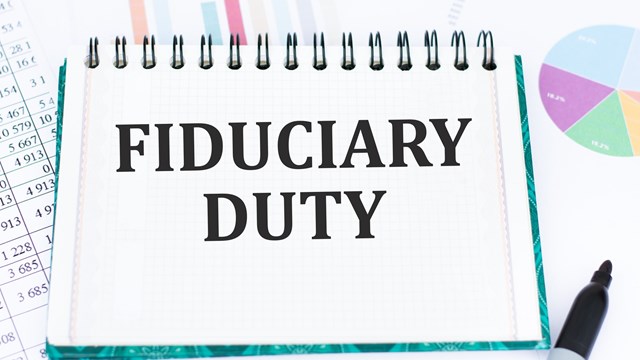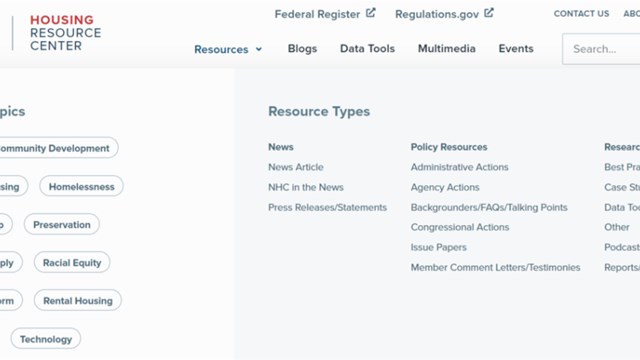Across the country, one of the biggest challenges to governing co-ops, condominiums, and homeowners associations is finding new members who are willing to volunteer their time and energy to serve on their community’s board of directors. In addition to a time commitment that can seem onerous to those whose lives are already packed with work, families, hobbies, households, and more, board service comes with myriad tasks, responsibilities, and politicking. After all, who would want to take an unpaid gig that potentially makes you the recipient of all your neighbors’ grievances?
Oh, right—I did. Seven years ago, in an effort to help a small cohort of relatively new shareholders redirect a long pattern of what we saw as dysfunctionality, financial mismanagement, and abdication of fiduciary duty among previous boards, I ran for a seat on the board of the co-op where I live in Lower Manhattan. In a 1,700-unit community where around half of the shareholders acquired their units during the decades when the corporation operated under Title I of the Federal Housing Act of 1949 (inelegantly titled “Slum Clearance and Community Development and Redevelopment”), getting new members elected was not an easy feat. It entailed weeks of campaigning, printing and distributing fliers about my qualification and intentions, and even positioning myself in the lobbies with my two toddlers and free lemonade.
This is my story about becoming a New Kid on the Board that I hope will offer some advice and resources that might be useful to others who are new to their own co-op, condo, or HOA board; those who are considering board service; or existing board members and their support professionals looking to help educate newer members—or themselves.
Step By Step
Once our co-op’s board election was certified, one of the veteran board members called to inform me of my ‘win.’ A retired educator with a fondness for conspiracy theories and a helping of good ol’ mid-century chauvinism, he told me, “I have one piece of advice for you: Stay quiet and let the others talk.” He said in my first year, I was there to learn. (Our board members serve three-year terms.) There was a lot of complicated stuff going on, he warned, and it would be best if I would just listen.
My “board orientation,” as it were, consisted of a four-inch binder from our management that contained previous years’ meeting minutes, resolutions, financial statements, management reports, and communications to shareholders; copies of the corporation’s governing documents; and printouts of various articles—some straight from this publication!—about legal precedents, board governance, and other matters related to multifamily living and the history of co-ops. While legal and management professionals universally agree that new board members should read and understand this information, it is admittedly easier said than done. In hindsight, it would have helped to have a current, knowledgeable board member walk me through some of the more salient items. Alas, I had no such guide.
In our first meeting, in which we elected officers, it was clear that I was not the only one who needed a refresher on parliamentary procedure. We had to redo several of the votes because one member had written “sustained” rather than “abstain” on their secret ballot. It also became clear that this member was part of a majority faction of long-standing directors who were guided by fallacy, deferral, and nepotism. And since I was the only new member that year, discussions and voting proceeded without explanation or background information, using esoteric industry terminology and in-house shorthand that had been established long ago. “All in favor of option C for the lentil [sic] replacement?”—Huh?
In spite of all that, no one stepped up for the position of secretary, so I became an officer right off the bat. This allowed me to gain extra insight and education from our extremely competent and seasoned general manager, Frank Durant of Charles H. Greenthal & Co. He took me on a tour of the co-op’s four buildings, showing me everything from the boilers to the roofs. I was able to learn about the 13-acre property’s systems, components, projects, and the correct terminology and meanings (FYI, lintels—not ‘lentils’— are the support beams above openings like doors and windows), allowing me not only to engage more confidently in the boardroom, but also to translate and more clearly communicate board actions and decisions to the co-op’s 5,000 tenant-shareholders in monthly reports.
Hang Tough
What I’ve learned over the years is that even beyond the community in which you live is a broader community dedicated to serving the multifamily industry. In addition to the resources this publication provides in print, online, and at its annual trade shows, there are other organizations and associations throughout the nation and beyond that give support and guidance to boards and homeowners in co-op, condo, and HOA communities.
In my first board year, Durant gave me information to sign up for the Council of New York Cooperatives and Condominiums (CNYC) Housing Conference (http://www.cnyc.com/housing.htm), where I took classes on understanding budgets and financial statements, topics and terms pertaining to co-ops and condos, and emergency preparedness. CNYC also offers courses and seminars throughout the year; many are free to members.
Dan Wurtzel, president of property management firm FirstService Residential New York, recently gave just such a talk over Zoom called “Onboarding New Board Members.” He believes that “successful boards are those that are familiar with the building’s bylaws and other governing documents. They are also acutely aware of their fiduciary obligation in making decisions to align the best interests of the cooperative or condominium above any individual interests.” He notes that large, national management firms like FirstService offer many resources to boards themselves through their website and associated events.
Durant also informed me about the CooperatorEvents Expos at the NY Hilton and Javits Center, where I met more of our service providers and vendors, learned about the industry, and sat in on seminars about reserve planning, problem residents, and energy efficiency. (Readers take note: CooperatorEvents’ in-person Expos are back this fall, giving you the opportunity to learn straight from the experts in all aspects of multifamily living and administration. Register for free in your region today! www.expos.yrpubs.com)
The Community Associations Network (www.communityassociations.net) is an online resource that aggregates news and information related to co-ops, condos, and HOAs. There, boards and service professionals can access the latest on legislation, events, and issues pertaining to association living and governance throughout the U.S. and Canada.
The Community Associations Institute (CAI), with 63 chapters worldwide (www.caionline.org), provides information, resources, and advocacy to its more than 40,000 members. Marilyn Brainard, member of the CAI Government & Public Affairs Committee, expresses the importance of orienting new board members to the critical role they play in the health and safety of their community’s structures and residents. The recent tragedy in Surfside, Florida, underscores just how important vigilance and action are on any board.
“Board members—in all associations—are expected to use recognized experts to examine the integrity of the physical property as one of the most important responsibilities of a director, especially when lives may be involved,” says Brainard. “This usually means hiring qualified business partners to report to the board and members of the association the soundness of structures providing housing. Not only [should boards] accept the report’s recommendations, but [they should] commence action for corrections in a timely manner. Aging high-rise condominium associations are especially vulnerable due to the buildings’ configuration and the natural degrading of some original construction products over time.”
You Got the Right Stuff
Thorough and transparent communication is also essential to a healthy community. Boards should not hold back or “sugarcoat” a building’s or association’s financial or physical status, even—perhaps especially—if the news might seem unfavorable to other homeowners or shareholders. “If an association is composed of owners on limited income,” continues Brainard, “the board needs to express the importance of keeping the integrity of their units. Recent programs by the federal government may be accessed to help meet this financial obligation for individual owners, and should be pursued.”
Indeed, I personally believe that putting forth robust, accurate, timely information was what turned the tide in our community to a more progressive and proactive board. In the intervening years, there has been more interest from newer shareholders in serving on the board and its committees. That, and a higher participation in elections, has led to an eventual shift in the makeup of the board to one that consists of 11 professional, astute, responsible members who represent the community wholly and dutifully. As far as anyone can remember, this year’s election was the first uncontested one in the co-op’s 60-year history—whether that speaks to community apathy or contentment remains unknown, but I’d like to think it is the latter!
Now that I write for the publication that boards and managers turn to for information about needs, processes, services, and laws related to co-ops, condos, and HOAs, perhaps this article will serve as a primer for other board newcomers—or for existing boards and management companies seeking to create new “board on-boarding” materials themselves.
Darcey Gerstein is Associate Editor and Staff Writer for CooperatorNews.










Leave a Comment